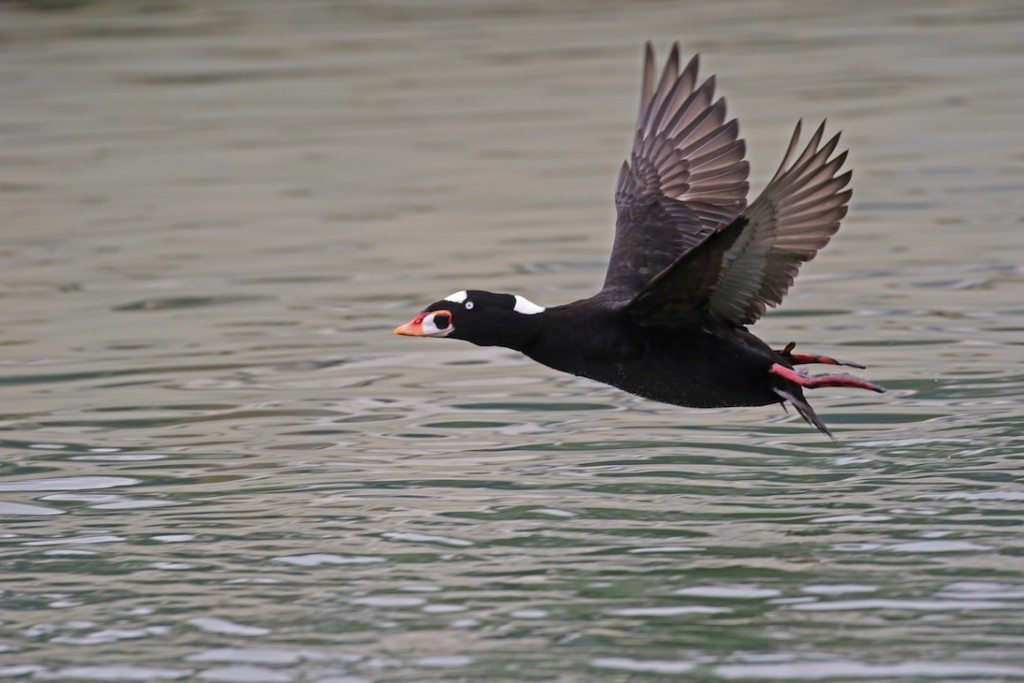Art for all, and less light pollution for birds
By Ilana DeBare
Bay Area residents will receive a sparkling nighttime gift this month when the Bay Lights art installation on the Bay Bridge goes live again permanently.
Bay Area birds are getting a gift too – a reduction in light pollution along the western span of the Bay Bridge.
This month, as an outgrowth of the Bay Lights rekindling, CalTrans replaced the old bulbs lighting the bridge roadway with new LED fixtures that are both more energy-efficient and more narrowly targeted on the traffic lanes.
The new LED fixtures are good for birds and wildlife in several ways:
- Much less nighttime light will spill over onto Bay waters, decreasing the disturbance to resting water birds and other marine life.
-
Reduced glare from fixed lighting will be better for overhead migrating birds that rely on seeing the stars to navigate.
- Finally, greater energy efficiency means less of a contribution to climate change, a major threat to wildlife in coming decades.
The lighting improvements grew out of a year-long partnership between Golden Gate Bird Alliance, Caltrans, and Illuminate, the sponsor of the Bay Lights public art installation.


“This is a great example of creative people from the public and private sector collaborating to do something wonderful for people and for wildlife in a way that’s a model for the rest of the country,” said Golden Gate Bird Alliance Executive Director Cindy Margulis.
“Our relationship with Audubon is proof positive that art and the environment can work together in big beautiful ways,” said Ben Davis, CEO and founder of Illuminate.
Bay Lights – a monumental, computer-driven display of moving lights on the cables of the Bay Bridge, between San Francisco and Yerba Buena Island – was first mounted in March 2013. Created by artist Leo Villareal, the project was originally planned as a temporary two-year installation and shut down in March 2015.
But public response was so enthusiastic that organizers raised $4 million to turn it into a permanent feature of the bridge, to be maintained by CalTrans for at least the next decade. On January 30, Bay Lights will be re-kindled as part of the festivities leading up to the Super Bowl.
Golden Gate Bird Alliance approached the Bay Lights organizers more than a year ago about the project’s potential impacts on wildlife. During discussions that included Caltrans engineers and biologists, it was determined that the old high-pressure sodium lights serving traffic on the bridge were more problematic for wildlife than the 25,000 new low-wattage LEDs in the art installation.
Unlike LEDs, the old sodium lights were not well-aimed and thus produced a lot of ambient glare and light spillage onto the Bay’s surface waters.

“They were wasting light that was intended for human safety on the bridge, and sending it into places that were harmful to wildlife,” Margulis said. “Think about how humans feel when their circadian rhythm is disrupted by lights at night. This was doing the same thing to birds and the whole ecosystem in the water.”
Replacing the old sodium lights with LEDs on the 150 poles of the bridge’s western span will reduce the glow by 50 percent, and ensure that the light is properly focused on the roadway where drivers need it.
LED fixtures will also use an estimated 30 percent less energy. They’ll last longer than the old sodium lights – 10 to 15 years instead of two to three years. By using less energy, they also save taxpayer money.
The new LED fixtures also offer aesthetic benefits – being visually consistent with the Bay Lights artwork.
“This will bring the bridge into illumination harmony,” said Davis.
“Publicly accessible art and protecting wildlife are passionate values for so many of us in the Bay Area,” said Margulis. “It’s inspiring to see how art, conservation, and smart engineering can come together to create a great project on this landmark bridge.”
———————————-
Learn more about the challenges posed to birds by urban lights: See our Lights Out for Birds page.

